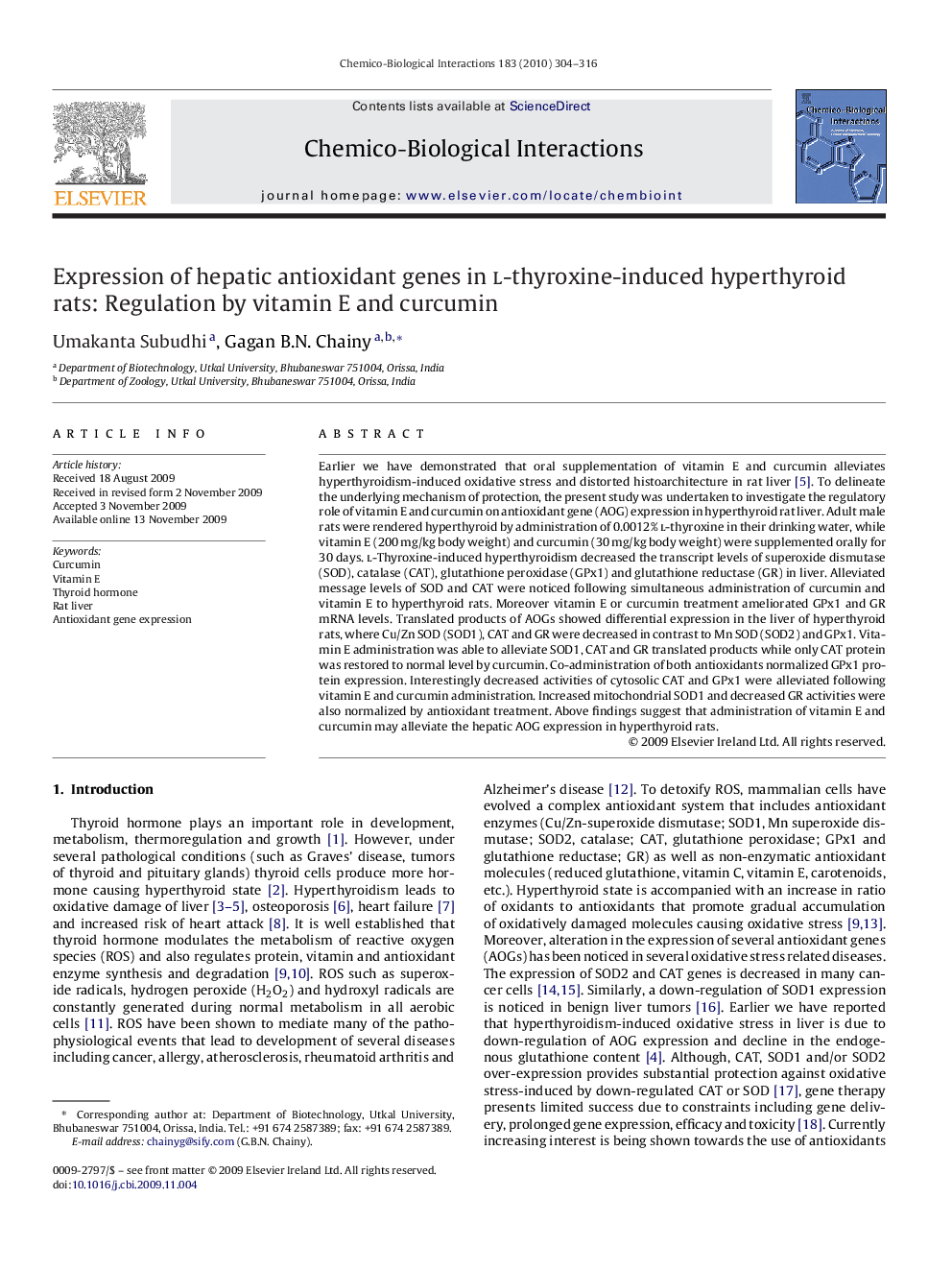| Article ID | Journal | Published Year | Pages | File Type |
|---|---|---|---|---|
| 2581348 | Chemico-Biological Interactions | 2010 | 13 Pages |
Earlier we have demonstrated that oral supplementation of vitamin E and curcumin alleviates hyperthyroidism-induced oxidative stress and distorted histoarchitecture in rat liver [5]. To delineate the underlying mechanism of protection, the present study was undertaken to investigate the regulatory role of vitamin E and curcumin on antioxidant gene (AOG) expression in hyperthyroid rat liver. Adult male rats were rendered hyperthyroid by administration of 0.0012% l-thyroxine in their drinking water, while vitamin E (200 mg/kg body weight) and curcumin (30 mg/kg body weight) were supplemented orally for 30 days. l-Thyroxine-induced hyperthyroidism decreased the transcript levels of superoxide dismutase (SOD), catalase (CAT), glutathione peroxidase (GPx1) and glutathione reductase (GR) in liver. Alleviated message levels of SOD and CAT were noticed following simultaneous administration of curcumin and vitamin E to hyperthyroid rats. Moreover vitamin E or curcumin treatment ameliorated GPx1 and GR mRNA levels. Translated products of AOGs showed differential expression in the liver of hyperthyroid rats, where Cu/Zn SOD (SOD1), CAT and GR were decreased in contrast to Mn SOD (SOD2) and GPx1. Vitamin E administration was able to alleviate SOD1, CAT and GR translated products while only CAT protein was restored to normal level by curcumin. Co-administration of both antioxidants normalized GPx1 protein expression. Interestingly decreased activities of cytosolic CAT and GPx1 were alleviated following vitamin E and curcumin administration. Increased mitochondrial SOD1 and decreased GR activities were also normalized by antioxidant treatment. Above findings suggest that administration of vitamin E and curcumin may alleviate the hepatic AOG expression in hyperthyroid rats.
